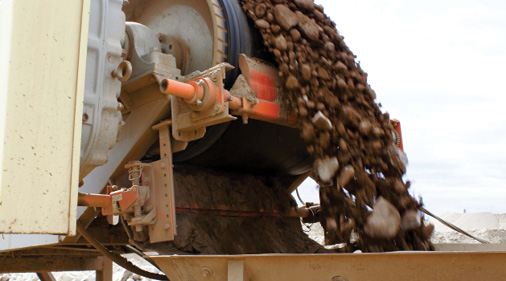MSHA reported that on April 15, a miner at Riverbend Sand and Gravel, Weld, Colo., died when the tail section of a collapsible belt conveyor fell and pinned him between the tail section and middle section. The miner was working as part of a crew to tear down the conveyor in preparation to be moved. This is the fourth fatality…
Read MoreTag: MSHA
MSHA issues nearly 200 violations in March
The Mine Safety and Health Administration (MSHA) said it completed impact inspections at 14 mines in 11 states in March, issuing 199 violations and one safeguard. Of the March violations, 74 were evaluated as significant and substantial and four had an unwarrantable failure finding. The agency completed these inspections at mines in Alabama, Colorado, Illinois, Kentucky, Louisiana, Michigan, Oklahoma, Pennsylvania,…
Read MoreAnalyzing conveyor belt wear from loading and cleaning
How can an operation stay ahead of wear? Is there such a thing as a CliffsNotes for conveyor belt cleaning and maintenance? How can damage be mitigated? R. Todd Swinderman uncovers that and more for NAM. Most conveyor belts in mines and quarries are considered operating in “severe duty” and typically don’t just wear out. They’re exposed to raw material…
Read MoreMSHA safety alerts: Electric arc flashes, customer truck drivers
MSHA has reported that in the last six months, 11 miners received injuries due to electric arc flashes. In one instance, two miners were injured by an arc flash while performing maintenance on a breaker box; another, two contract miners received burns while checking the rotation on a transformer. The agency recommends the following best practices to avoid this type…
Read MoreIndustry mourns Peluso passing
Editor’s note: the following remembrance has been supplied. It has been edited for clarity. On February 15, 2024, after 85 and a half amazing years, Robert Guy “Bob” Peluso passed away peacefully with his family by his side. Bob was renowned in the mining industry for his expertise regarding mine safety and played an important role in that arena, whether…
Read MoreA recent discrimination case – and some good news for mine operators
By Willa B. Perlmutter Well, guys, I hate to say I told you so, but…well, I told you so. A few months back, I wrote about a whistleblower retaliation case that had just come out of the Federal Mine Safety and Health Review Commission, and shared with you that I thought the Commission’s reasoning gave cause for alarm. (I know,…
Read MoreMSHA issues final silica rule
The Mine Safety and Health Administration (MSHA) has issued a final rule to better protect the nation’s miners from health hazards associated with exposure to respirable crystalline silica. It lowers the permissible exposure limit to 50 micrograms per cubic meter of air for a full-shift exposure, calculated as an eight-hour, time-weighted average. If a miner’s exposure exceeds the limit, the…
Read MoreFebruary impact inspections uncover 207 violations: MSHA
The Mine Safety and Health Administration (MSHA) completed impact inspections at 13 mines in nine states in February, identifying 207 violations with 58 being classified as significant and substantial and two as unwarrantable failures. The agency completed the impact inspections at mines in Arizona, Indiana, Kentucky, Minnesota, New York, Pennsylvania, Utah, Washington and West Virginia. “February’s impact inspections uncovered hazardous…
Read MoreNo time to put your head in the sand – MSHA and failure-to-abate orders
Lately I’ve been giving some thought to what MSHA considers “enhanced enforcement,” which really refers to enforcement actions that MSHA takes against a mine operator beyond the § 104(a) citations that are the most frequent result of a mine inspection. (We call them “§ 104(a) citations” because the authority for issuing them comes from § 104(a) of the Mine Act.…
Read MoreMSHA reports third fatality of 2024
MSHA has reported that on March 1, a miner at Swift Creek Mine in Hamilton County, Fla., died after a metal slurry pipe struck him. The miner was removing the last bolt connecting two metal slurry pipes when the pipe broke free and swung in his direction. This is the third fatality reported in 2024, and the first classified as…
Read More


